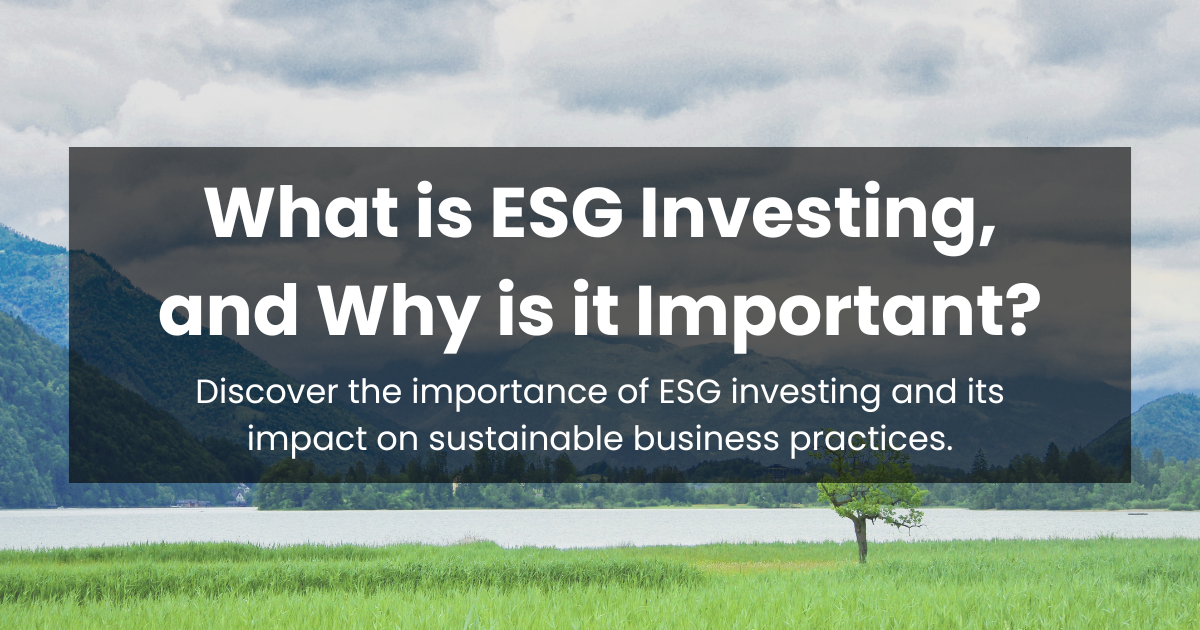EPS forecast
Table of Contents
EPS forecast
Forecasting is a key strategy for guiding investments across various industries and regulatory frameworks. EPS forecasting analysis, along with a variety of factors into consideration, offers various opportunities for success and generates greater returns to long-term investors. For investors looking to maximise their profits while navigating the volatile and competitive stock market, EPS forecasting can be an essential tool.
What is an EPS forecast?
The earnings per share (EPS) forecast is a financial analysis that illustrates the projected revenue for each outstanding share of a company’s stock over a specific time frame, typically a fiscal year or quarter. When assessing a company’s potential profitability and growth, investors, analysts, and stakeholders rely significantly on it.
The process of generating forecasts for EPS involves an in-depth review of historical financial data, industry dynamics, market patterns, and macroeconomic parameters. By helping investors navigate the complexity of the financial markets with better clarity and confidence, these forecasts help them in making well-informed decisions about stock valuation, investing strategies, and portfolio management.
Understanding an EPS forecast
Earnings per share, or EPS, is a financial indicator that shows how much of a company’s profits are distributed to every outstanding share of its common stock. Investors frequently consider it a significant measure of a company’s profitability to evaluate its performance and determine the value of its shares.
Revenue forecasting, operational costs, taxes, interest charges, and outstanding shares are some variables that affect EPS forecasts. Analysts create these forecasts to evaluate macroeconomic variables, corporate advice, industry trends, and financial models.
Investors rely on EPS forecasts to evaluate a company’s profitability, consider its position against competitors, and make well-informed investment decisions. Although a lower EPS forecast can imply difficulties or slower growth, a higher EPS forecast suggests potential profitability and expansion.
Formula of an EPS forecast
The standard EPS formula is:
Net income – preferred dividends
EPS = ——————————————————————————
weighted average number of outstanding shares
Calculations of an EPS forecast
The following formula may be performed to determine the forecasted EPS in the stock market:
Projected Earnings
EPS = ————————————————————————
Projected diluted shares outstanding
Where:
- Projected earnings may be forecasted by projecting future sales for the business and deducting forecasted expenses like interest, taxes, operational expenditures, and cost of goods sold (COGS).
- Projected diluted shares outstanding include the overall amount of shares that may be in circulation if all convertible securities—like warrants, convertible bonds, and stock options—were to be converted into shares or exercised.
Investors and analysts may estimate the company’s EPS and gain important information about its future profitability and stock market performance by using this approach to calculate the forecasted profits and diluted shares outstanding correctly.
Examples of an EPS forecast
Understand the EPS forecast with the following scenario:
For example, company ABC is set for the release of its EPS forecast for the coming year. With 100,000 shares outstanding, the corporation projects a net income of $USD 7,000,000 for that period of time. It also holds 100,000 potentially dilutive shares, such as convertible bonds and stock options.
It is simple to make the initial forecast using the basic EPS formula:
(Net income – preferred dividends)
Basic EPS = —————————————————————————————
Weighted average number of common shares outstanding
US$ 7,000,000 – 0
Therefore, basic EPS = ———————————— = US$ 7.00 per share
1,000,000
However, the company additionally calculates the diluted EPS, considering the possible influence of the 100,000 dilutive shares, to offer a more conservative forecast.
(Net Income – Preferred Dividends)
Diluted EPS = ———————————————————————————————————
(Weighted average number of common shares outstanding + prospective new shares from dilutive securities)
US$ 7,000,000 – 0
Therefore, diluted EPS = —————————————— = US$ 6.36 per share
(1,000,000 + 100,000)
Considering potential dilution into account, the diluted EPS forecasting in this scenario is US$ 6.36 per share, compared to the fundamental EPS forecast of US$ 7.00 per share. This illustrates the distinction between the two EPS measures and the effect of prospective dilution on EPS for the company.
Frequently Asked Questions
Calculating basic EPS requires dividing the total number of outstanding common shares by the weighted average earnings available to common shareholders.
On the other hand, the concept of diluted EPS considers the potential for dilution from convertible investments or securities, such as convertible bonds and stock options, which may increase the number of outstanding shares if there is a conversion.
Earnings Per Share (EPS) is the company’s net profit divided by its outstanding shares, which indicates the profit per share. Adjusted EPS modifies this figure by subtracting one-time expenses and revenues, providing a more accurate view of ongoing operational success.
Although EPS represents reported earnings, adjusted EPS provides investors with a more realistic overview of a company’s primary earnings potential by considering exceptional circumstances like asset sales or restructuring expenditures.
Some of the limitations of EPS include the following:
- The lack of consideration for acquisition costs in EPS might result in misunderstandings.
- Share buybacks and stock splits are two ways companies might alter earnings per share.
- Companies can easily manipulate the EPS by buyback of shares or by splitting the stocks.
- EPS does not consider cash flow or reflect non-cash expenditures like depreciation.
Analysts often use various techniques to forecast EPS, including regression analysis, industry comparisons, trend analysis, and financial modelling. To forecast future profits, they evaluate operating margins, expense patterns, and revenue growth. Regularly revise forecasts in light of latest information, and modify investment plans accordingly. Investors may successfully forecast EPS and make well-informed judgements by utilising a rigorous analytical technique.
A publicly listed company’s total number of outstanding shares is typically available on their websites, stock exchanges, or the shareholder’s equity portion of the balance sheet as filed with an authorised data provider such as the U.S. Securities and Exchange Commission. Total authorised shares, outstanding shares, and floating shares are added together in this section.
Related Terms
- Direct market access
- Deficit interest
- Adjusted distributed income
- International securities exchanges
- Margin Requirement
- Pledged Asset
- Stochastic Oscillator
- Prepayment risk
- Homemade leverage
- Prime bank investments
- ESG
- Capitulation
- Shareholder service fees
- Insurable Interest
- Minority Interest
- Direct market access
- Deficit interest
- Adjusted distributed income
- International securities exchanges
- Margin Requirement
- Pledged Asset
- Stochastic Oscillator
- Prepayment risk
- Homemade leverage
- Prime bank investments
- ESG
- Capitulation
- Shareholder service fees
- Insurable Interest
- Minority Interest
- Passive Investing
- Market cycle
- Progressive tax
- Correlation
- NFT
- Carbon credits
- Hyperinflation
- Hostile takeover
- Travel insurance
- Money market
- Dividend investing
- Digital Assets
- Coupon yield
- Counterparty
- Sharpe ratio
- Alpha and beta
- Investment advisory
- Wealth management
- Variable annuity
- Asset management
- Value of Land
- Investment Policy
- Investment Horizon
- Forward Contracts
- Equity Hedging
- Encumbrance
- Money Market Instruments
- Share Market
- Opening price
- Transfer of Shares
- Alternative investments
- Lumpsum
- Derivatives market
- Operating assets
- Hypothecation
- Accumulated dividend
- Assets under management
- Endowment
- Return on investment
- Investments
- Acceleration clause
- Heat maps
- Lock-in period
- Tranches
- Stock Keeping Unit
- Real Estate Investment Trusts
- Prospectus
- Turnover
- Tangible assets
- Preference Shares
- Open-ended investment company
- Ordinary Shares
- Standard deviation
- Independent financial adviser
- ESG investing
- Earnest Money
- Primary market
- Leveraged Loan
- Transferring assets
- Shares
- Fixed annuity
- Underlying asset
- Quick asset
- Portfolio
- Mutual fund
- Xenocurrency
- Bitcoin Mining
- Option contract
- Depreciation
- Inflation
- Cryptocurrency
- Options
- Asset
- Reinvestment option
- Capital appreciation
- Style Box
- Top-down Investing
- Trail commission
- Unit holder
- Yield curve
- Rebalancing
- Vesting
- Private equity
- Bull Market
- Absolute Return
- Leaseback
- Impact investing
- Venture Capital
- Buy limit
- Asset stripper
- Volatility
- Investment objective
- Annuity
- Sustainable investing
- Face-amount certificate
- Lipper ratings
- Investment stewardship
- Average accounting return
- Asset class
- Active management
- Breakpoint
- Expense ratio
- Bear market
- Annualised rate of return
- Hedging
- Equity options
- Dollar-Cost Averaging (DCA)
- Due Diligence
- Contrarian Investor
Most Popular Terms
Other Terms
- Market maker
- Strong order book
- Economic calendar
- Fiat money
- Options expiry
- Settlement currency
- Federal funds rate
- Active Tranche
- Convertible Securities
- Synthetic ETF
- Physical ETF
- Initial Public Offering
- Buyback
- Secondary Sharing
- Bookrunner
- Notional amount
- Negative convexity
- Jumbo pools
- Inverse floater
- Forward Swap
- Underwriting risk
- Reinvestment risk
- Final Maturity Date
- Payment Date
- Secondary Market
- Mark-to-market
- Yield Pickup
- Subordinated Debt
- Trailing Stops
- Treasury Stock Method
- Bullet Bonds
- Basket Trade
- Contrarian Strategy
- Exchange Control
- Notional Value
- Relevant Cost
- Dow Theory
- Speculation
- Stub
- Trading Volume
- Going Long
- Pink sheet stocks
- Rand cost averaging
- Sustainable investment
- Stop-limit sell order
- Economic Bubble
- Ask Price
- Constant prepayment rate
- Covenants
- Stock symbol
Know More about
Tools/Educational Resources
Markets Offered by POEMS
Read the Latest Market Journal

One Dollar at a Time: The Potential of Fractional Shares
Table of contents 1. Introduction 2. Dollar-Cost Averaging 3. Popularity of Dollar-Cost Averaging 4. Small...

Unit Trusts vs Exchange Traded Funds (ETFs) – Which is better for your portfolio?
Imagine you are dining at a nice restaurant, feeling overwhelmed by the variety of seemingly...

Weekly Updates 20/5/24 – 24/5/24
This weekly update is designed to help you stay informed and relate economic and company...

What is CFD? With 2 Practical Examples
In this article, you will learn what CFD (Contract for Difference) is, the costs and...

What is ESG investing, and why is it important?
Over the last five years, Environmental, Social, and Governance (ESG) investing has evolved from being...

In the diverse world of unit trusts, various funds employ distinct investment strategies aligned with...

Hong Kong Value Stocks Q2 2024
After a long period of sluggishness, Hong Kong market has begun to pick up. The...

Weekly Updates 13/5/24 – 17/5/24
This weekly update is designed to help you stay informed and relate economic and company...












